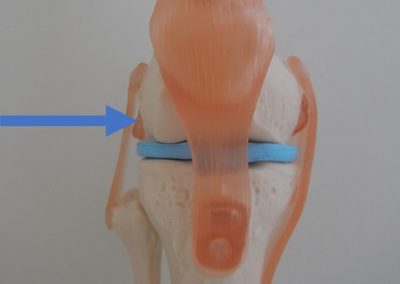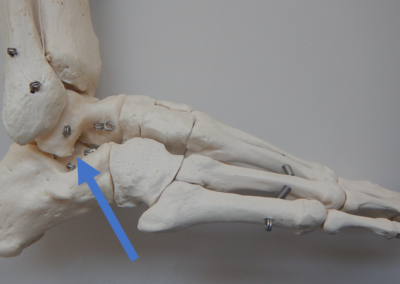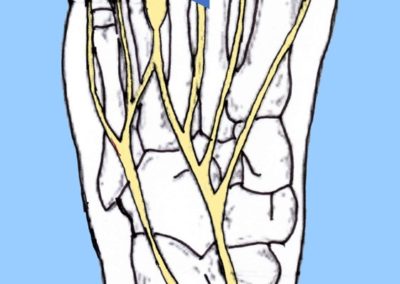Injections in joints such as the shoulder, hip, knee (see illustration) and ankle joints, but also in tendons and muscles are common therapies in daily orthopaedic practice.
When injecting into but also into joints, especially when using corticosteroids, the “no-touch technique” is vital, as its immunosuppressive properties can increase susceptibility to infection and make the detection and treatment of an infection more difficult. In our practice, this means that the procedure is performed under absolutely sterile and aseptic conditions comparable to a surgical procedure under X-ray image intensifier control. Thus, septic arthritis is a potentially serious but avoidable complication.
Repeated corticosteroid injections can lead to steroid arthropathy in the form of degenerative joint changes in heavily loaded joints (e.g. knees of football players or long-distance runners).
For this reason, corticosteroid injections in heavily loaded joints should be given at a minimum interval of 4, preferably 6 months.
I do not use corticosteroids for injections into tendons, muscles and surrounding connective tissue and soft tissues in order to avoid complications such as tendon ruptures, soft tissue and connective tissue atrophies (atrophy = atrophy). Here, the use of Traumeel ® and/or autologous blood offer valuable and sustainable alternatives.
In recent years, more and more injections have been carried out on peripheral nerves with ultrasound guidance such as the median nerve (carpal tunnel syndrome), the lateral cutaneus femoris nerve (meralgia parästhetica) and the plantar nerve (at the foot in Morton’s disease).
But also nerve cords in the area of the cervical spine such as the nervus occipitalis major and minor or the ganglion stellatum can today be localised very precisely by means of ultrasound and then treated under visual control. This is not only important for an optimal and lasting effect, but also increases safety. As the link between the head and trunk, our cervical spine in particular has a high density of vital vascular and nerve cords, which should not be injured if at all possible in order to avoid serious complications.
All of the above-mentioned procedures are performed by us under sterile and aseptic conditions under ultrasound (nerves, tendons, muscles) or X-ray image intensifier control (joints).
(+41) 043 268 33-22
info@orthopaedie-schmerztherapie.ch





